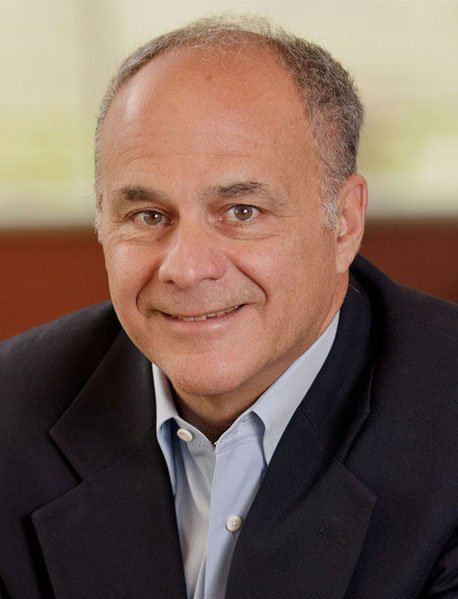“Help make life insurance a social imperative again.” That was the message to the audience during the opening general session Wednesday morning at the 2018 Life Insurance Conference in Chicago, delivered by Robert A. Kerzner, CLU, ChFC, president and CEO LIMRA, LOMA, LL Global Inc. (shown at left).
Kerzner rolled out plenty of statistics detailing how life insurance ownership has declined over the years – with 60 million households saying they know they need more life insurance with an average coverage gap between what they have and what they need of $200,000 per household – a coverage gap of $12 trillion. According to LIMRA data, there are nearly 19 million “stuck shoppers” who started searching for life insurance but haven’t secured it, and another 26 million Americans haven’t even started looking yet.
That’s a huge untapped market, and the industry’s challenge is how to reach these 63% of people who know they need coverage but either think it’s too expensive, the 61% of people who say they don’t buy life insurance because they have other priorities, or the 52% who say they have as much as they need and think “it’s not going to happen to me.”
For those 63% who think it’s too expensive: “We know that what they think it costs and what it actually costs are distinctly different,” Kerzner said. “If they actually knew what it cost, they could afford it. So how are you going to get that message to them?”
For those who think it won’t happen to them or have other priorities, if that’s what they believe, it allows them put life insurance on the back burner. “It just isn’t a necessity in people’s minds today,” Kerzner said.
The wall – the barrier today – is higher to convince people to buy it, Kerzner said, but remember there’s those 60 million people who need (or need more) coverage. “What do we have to do to make it a social imperative again?”
He noted there’s fewer agents today, which means those in the business have to take on more responsibility to spread the word about the power of life insurance, and dispel myths about the cost and how difficult it is to obtain coverage. “How do we bring the life insurance conversation up higher on the scale?”
Beyond life insurance often being the difference in whether a family can keep food on the table, stay in the same house and maintain a similar lifestyle after the death of a policyholder, Kerzner said the industry needs to do a better job of making the public aware of the power of the “twofer” – how life insurance can enable people to accomplish two things with one product. “We have to talk about the living benefits of life insurance as well,” Kerzner said. “How life insurance can be the dollars needed to pay for a college education; to pay for a down payment on a car; to pay for a down payment a house.”
Another way, Kerzner said, is to have pride in the industry you are in and to trumpet all the good things about it. He noted how insurers have $5.8 trillion invested in the U.S. economy. $76 billion was paid out in death benefits in 2016, and the industry pays out $1.5 billion dollars every single day in life insurance, annuity, LTCI, and DI payments to beneficiaries.
“We do a lot of good for the social fabric of this country,” Kerzner told the audience. “Be proud. We help families. We make a difference. Each of you need to become the goodwill ambassadors. Make it a social imperative again.”














Help make life insurance a social imperative again,,,,,,ok how…..kinda left us hanging……
Yeah… not many solutions or even suggestions as to how we are to accomplish the goal other than be proud of what you do. If you aren't proud to be a life insurance agent, what are you doing in the industry?
Fair enough – updated and added another paragraph with more of what he said. Just happened an hour ago!:1rolleyes: He also talked about how the industry needs to better leverage technology and make underwriting easier…
Being Proud don't pay the bills……….
Only been saying this for 20 years….Life Insurance is in the stone age when it comes to technology……I remember the first online health insurance application…very few life insurance company's have a workable online application…hell rates for term insurance only been on the net for about 10 years….
The one thing many of the 45-55 year olds are concerned about is running out of money and going on Medicaid. As the Medicaid rolls continue to swell, nursing home care will drop in quality. People are scared of being left in wet and messy diapers as the facility did not have the necessary staff to take care of them. The new linked life policies are a triple option product. Three benefits, immediate death benefits, LTCbenefits and cash value accumulation. I can absolutely guarantee one statement, you will use the LTC benefits or your heirs will receive the death benefit.
No but I wouldn't work at something I was ashamed of doing.
Pride doesn't feed the kids. There are plenty of people engaged in legal work but otherwise made to feel ashamed and that is the real shame.
I was speaking specifically of being an insurance agent but I have dug ditches, cleaned bathrooms, been a general laborer, a waiter and I was never ashamed to do any of it. As you say, it was legal.. it was honest and they were all jobs that needed to be done.
Yes, my response was more general, but even some people try to look down on insurance agents.
Oh.. they can look down all they want… But I am not ashamed of what I do.. Nor am I ashamed to tell be I am an insurance agent or salesman… I have never tried to make my self out to be anything else by using some type of "advisory or consultant" title. I am proyd to say "I sell insurance".. At least until recently when I seemed to slow down to a dead stop on activity. :twitchy:
So you're saying your a liar? :skeptical: Telling people you sell insurance when you do no such thing? :realmad:
I did say until recently…. If you don't get out and see people, you can't tell them anything.. :no: Perhaps when I get back from vacation???
Only working 40 hours a week too?:cry:
At insurance? Why would anyone work that many? ;):laugh:
Because you're young! You should be working 70 to 80 hours a week! Age is not just a number…it's a feeling. God, I feel old!
I don't call myself an insurance agent. I use my designation as my title – Chartered Financial Consultant and I do Insurance, Financial, and Retirement Planning.
Insurance is a solution to a problem, and most people are not qualified, nor do they understand the value of insurance to understand how I can help them. When I have called myself an insurance agent, they assign THEIR value of what THEY think I do. I'm the consultant, not them.
If I introduce myself saying "My name is DHK and I'm with New York Life" – They will ascertain what THEY think New York Life is and their impression of what they think a NYL agent does (no, I'm not with NYL – just an example). Same thing when you say "I sell insurance" or "I sell annuities" or even "I'm a CFP". Not only does nobody care, but they don't even understand what you're saying, until they understand WIIFM – "What's in it for me?" (The way you get around that at a captive agency is by saying something like "I'm DHK and I'm with NYL. What most people don't know is how NYL specializes in helping people to …")
In prospecting – "A no, is not a no, until you know that they know what they are saying 'no' to." Until they understand my true value proposition, collecting a bunch of no's is futile because you are not speaking in THEIR language! They want solutions to their problems, not another product pitch – unless they happen to be actively looking for that product. And if someone is looking for a product… WHO is the planner in that relationship? Who is evaluating who?
Until the problem is defined (a job function of a financial consultant), and the desire to solve it is ascertained, there is no reason to bring up my product & solutions to solve those problems.
The exception is if you are doing a variation of a features / benefits / price / "Do you want to buy" consultation. To me, that's what an FE agent does. They understand their menu of products and look to make the right fit of coverage for a given price and/or death benefit. There's nothing wrong with that… but it's not how I market myself or how I go about doing my job.